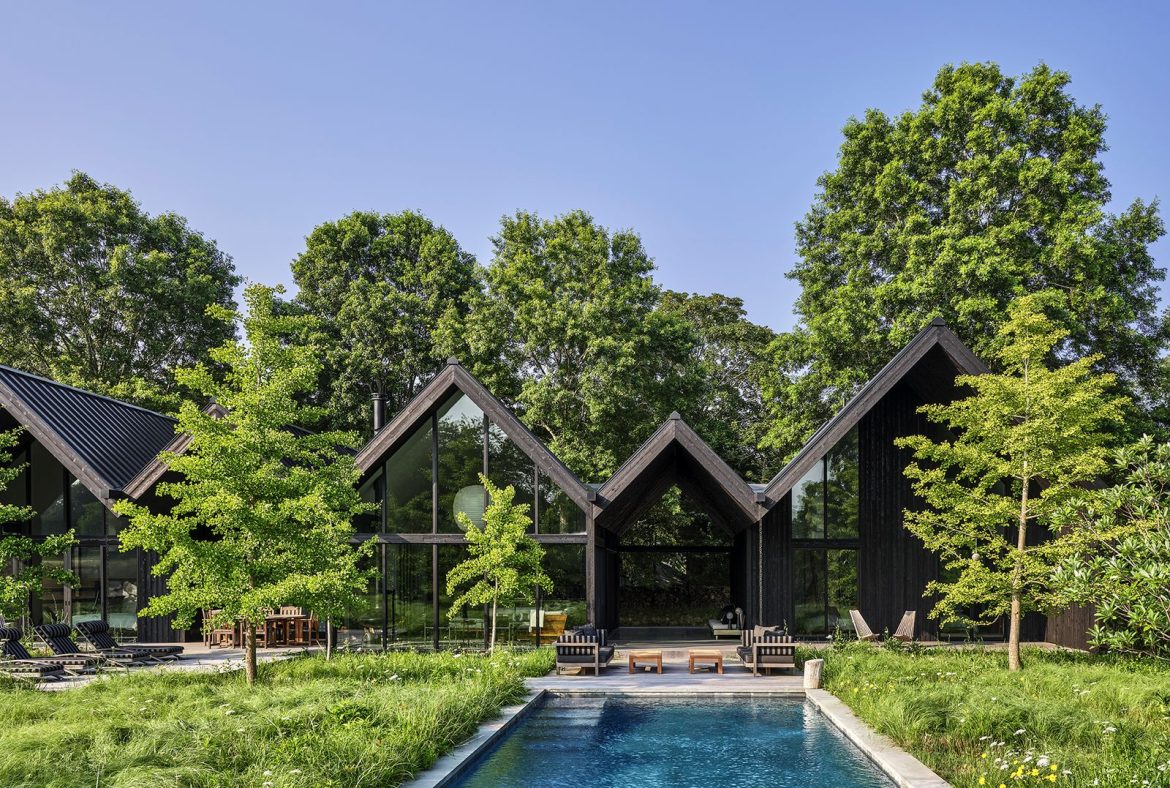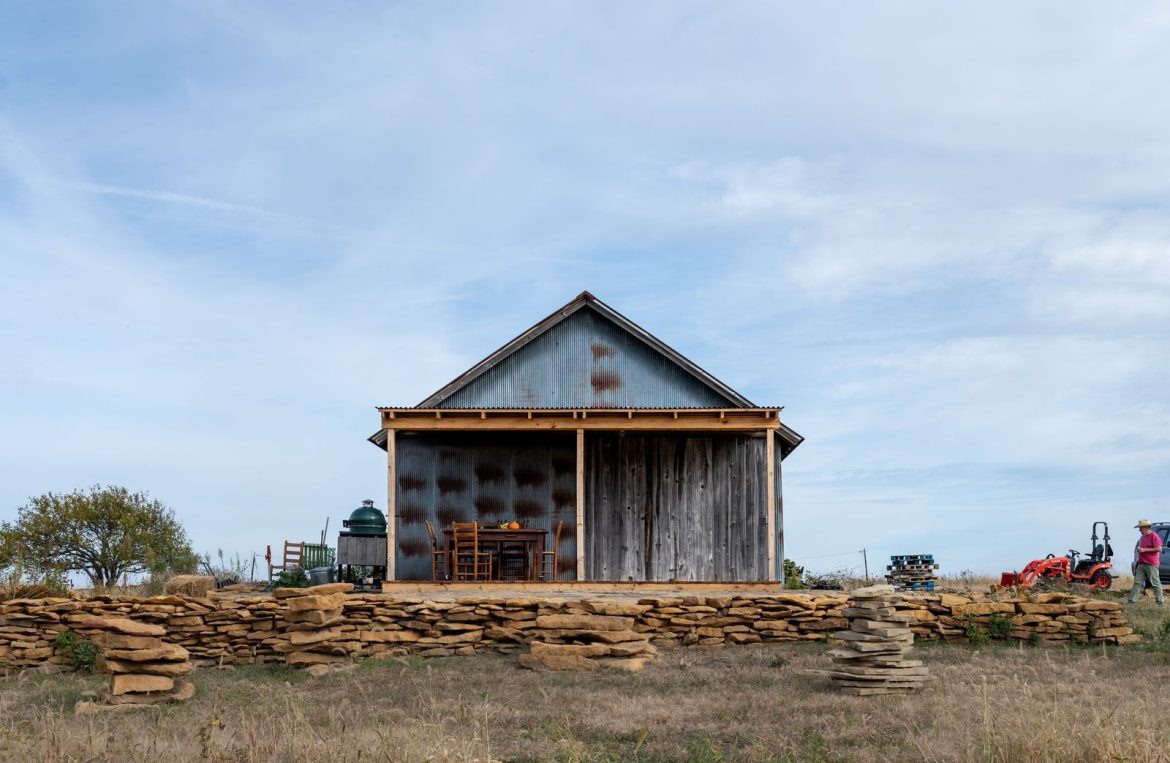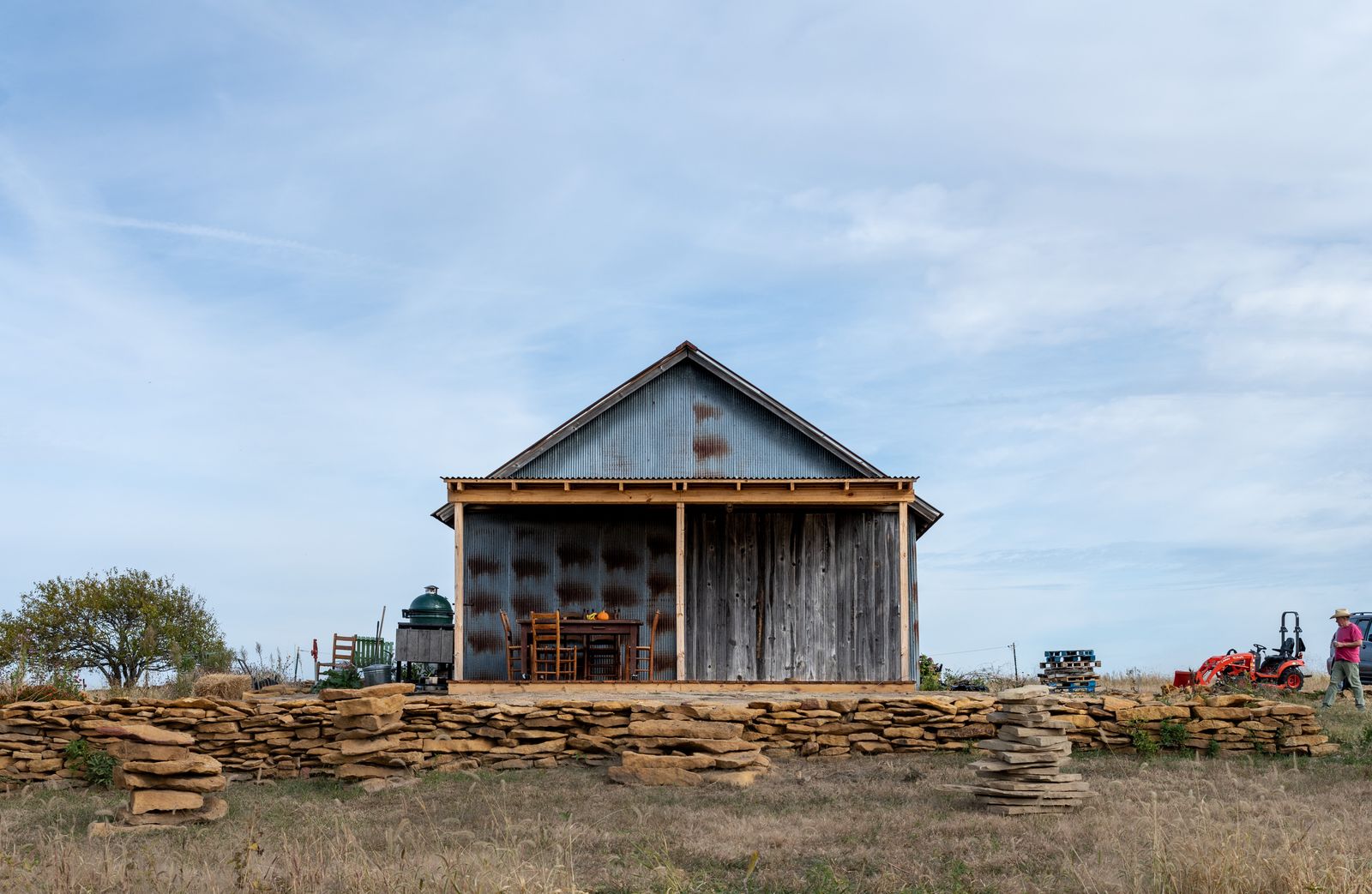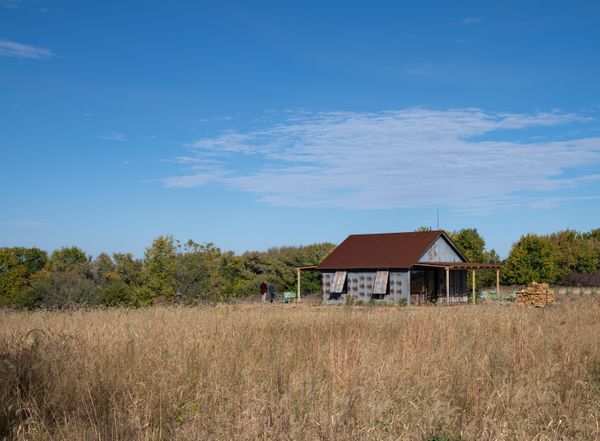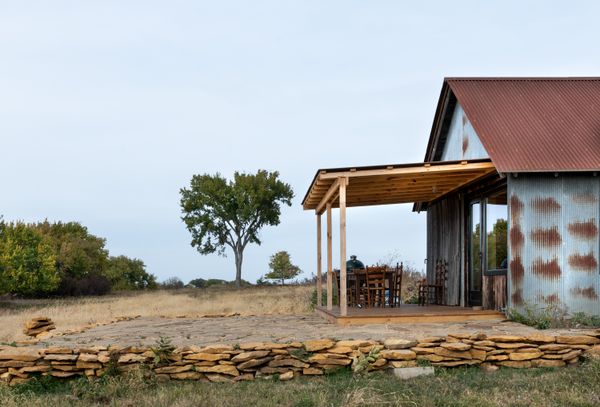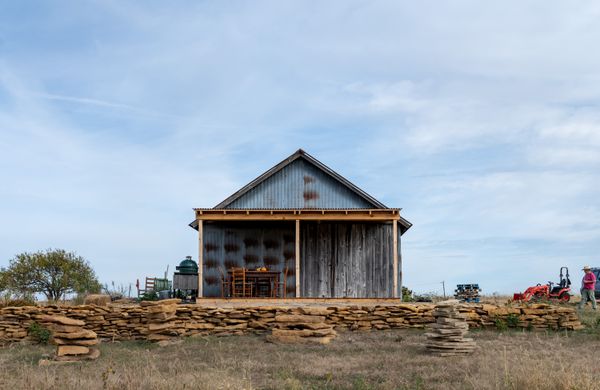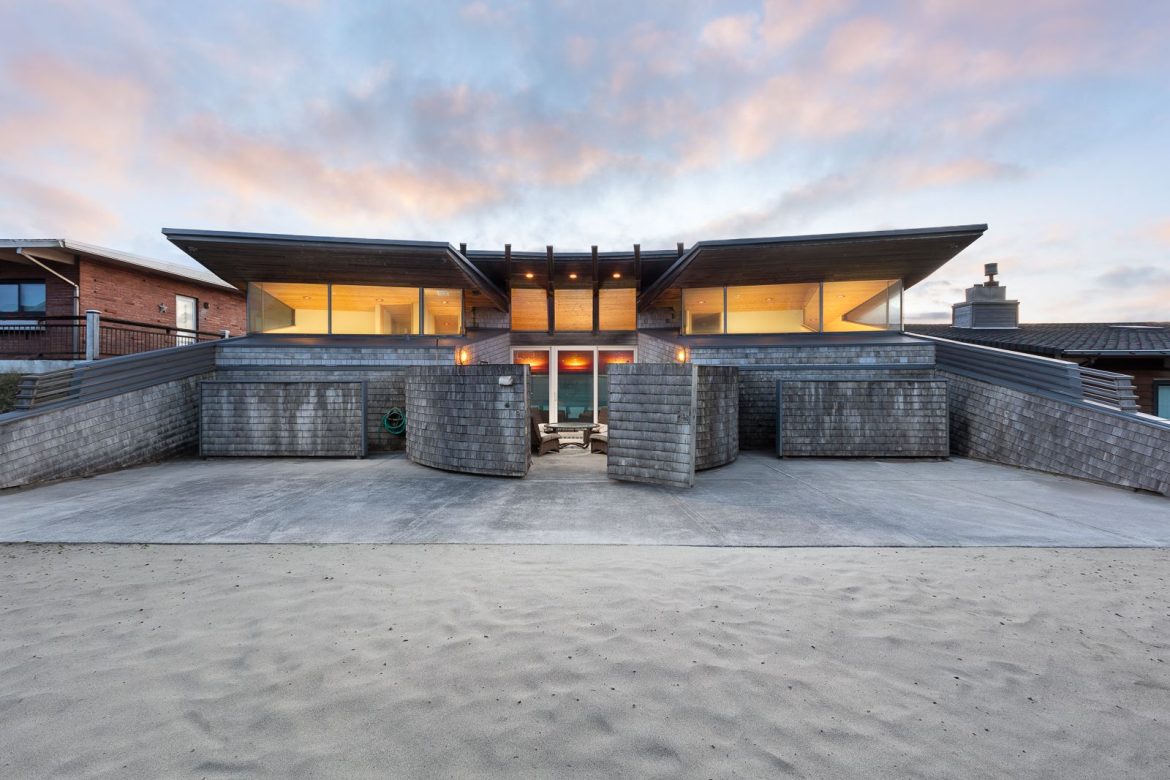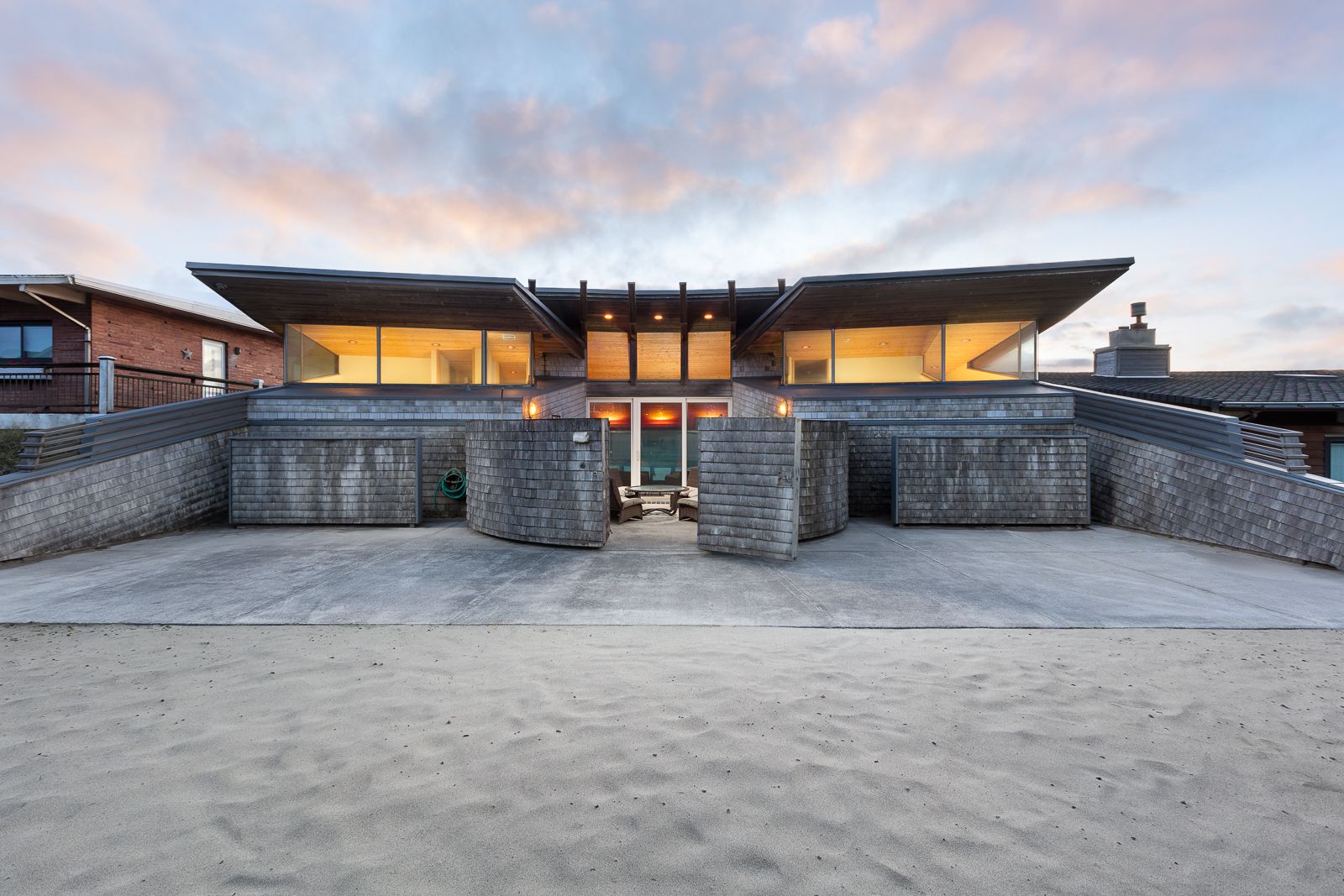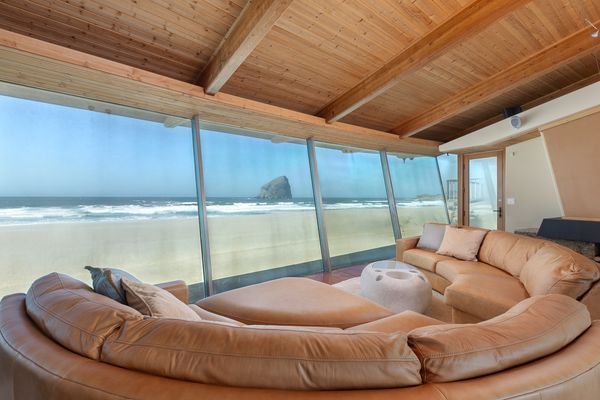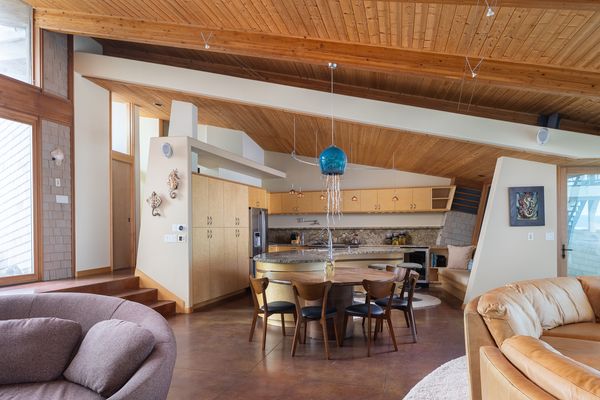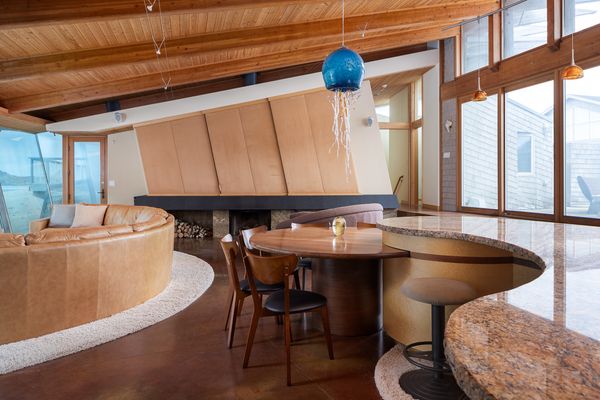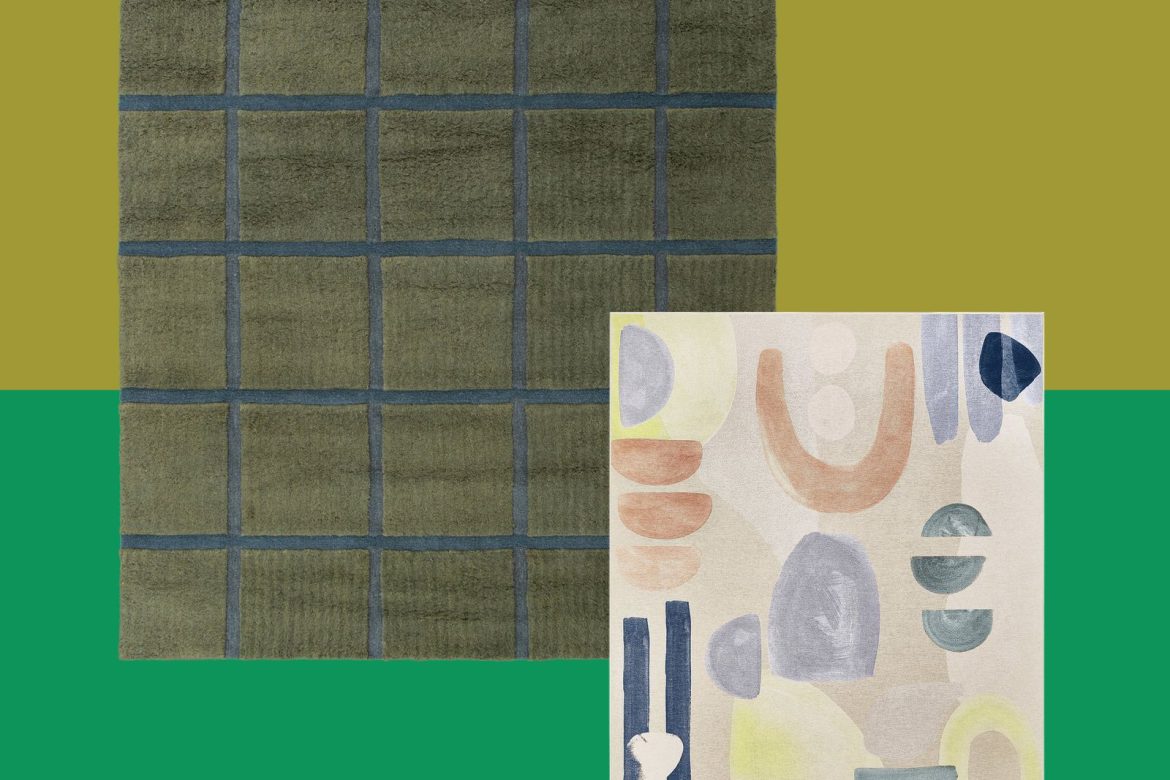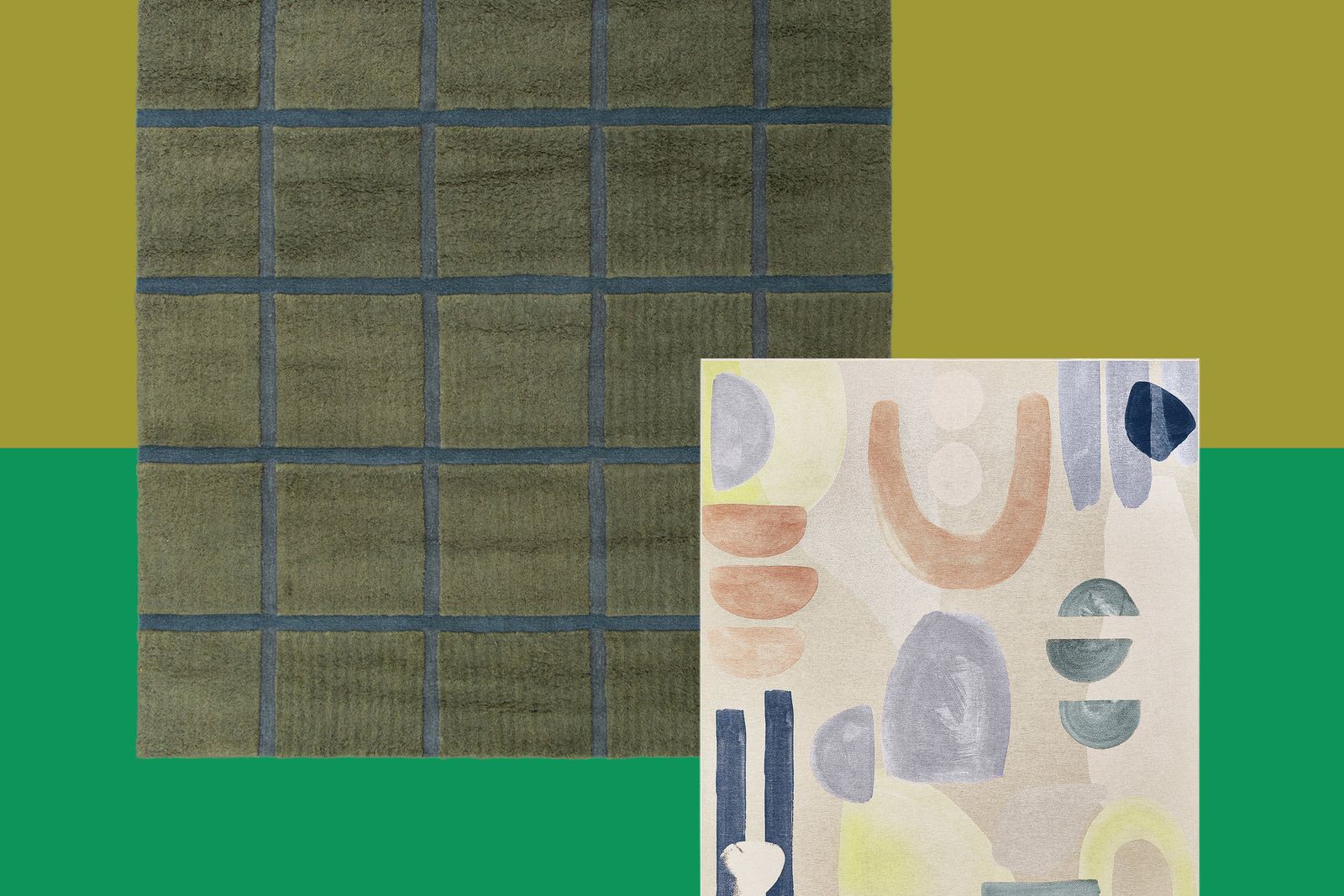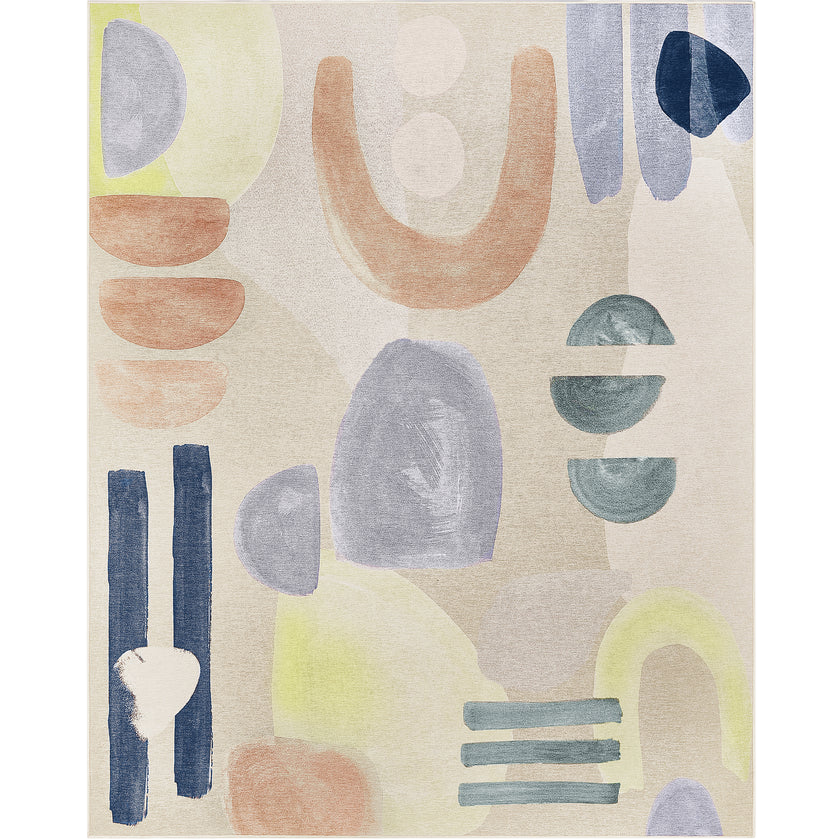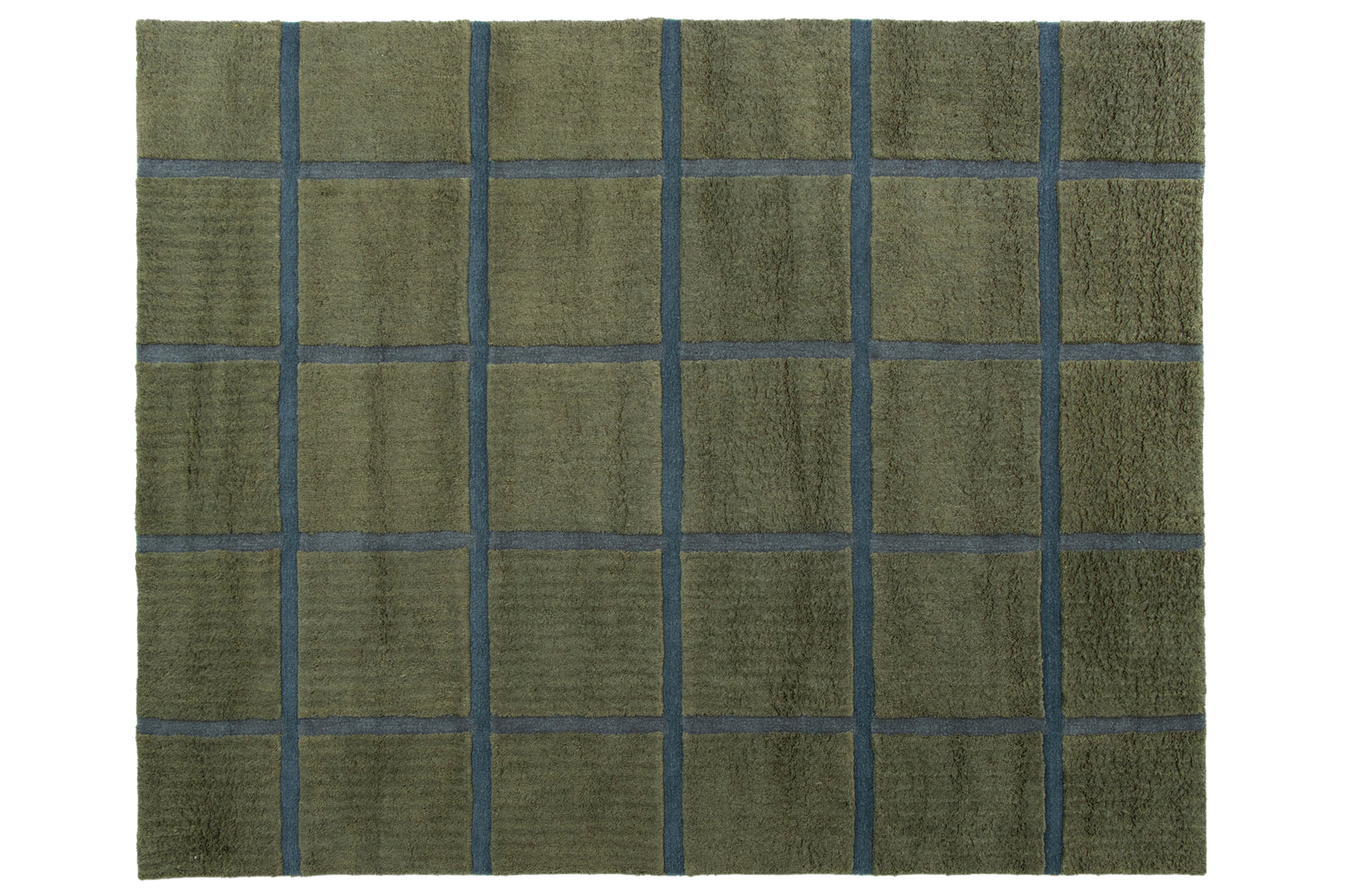A New York City couple creates a breezy but bold gabled retreat in East Hampton.
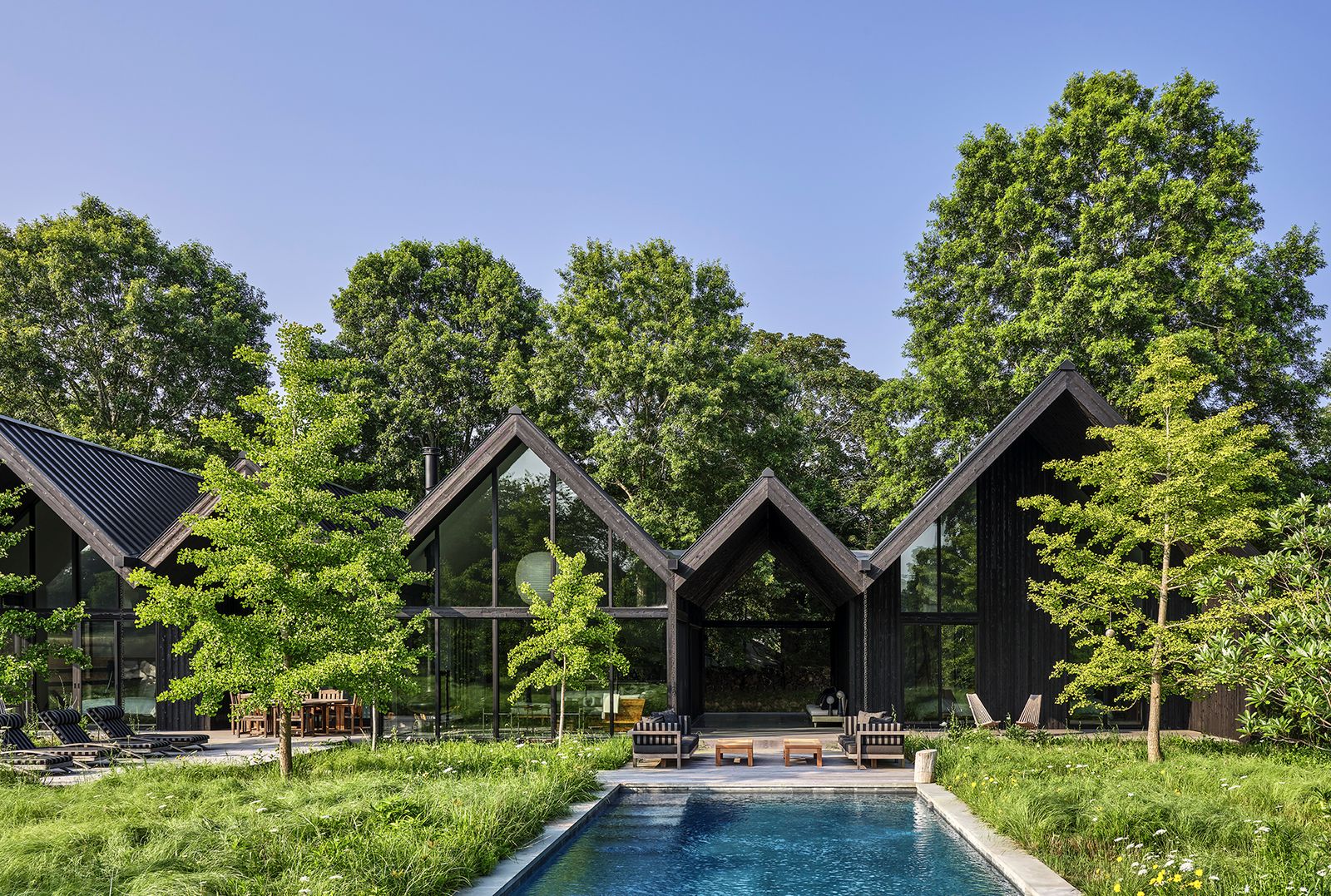
In 2015, New York City resident Ed Fogarty came across an inspiring site in East Hampton, New York, adjacent to a 17-acre working horse farm—land that could never be developed. “You’re surrounded by clear blue sky and open spaces, with no other houses in sight,” says Ed. “It felt secluded in a way that was nice coming from the bustling city.”
Together with his partner Tim McMullan, Ed purchased the bucolic property—which, at the time, had a small house on it. “I always wanted to build a house, and when I found this property, I fell in love with the site—not necessarily the house,” says Ed. After the purchase, Ed and Tim decided to spend time in the existing home in order to experience the nuances of the site, and get a better idea of what they wanted in their new home. “I knew if I lived there through the four seasons for a couple of years, I would really come to understand how the winds blow, how the sun traverses the sky,” says Ed.

“The breezeway is covered, but it opens on one side to the driveway, and it’s completely open at the other end to the pool and the rest of the property,” says Workshop/APD associate principal Tyler Marshall of the new East Hampton home. “So you walk through and experience this incredible view.”
Photo by Read McKendree/JBSA
After a several-years-long residence in the modest, 700-square-foot home, a vision developed for what their new home might look like. “In terms of aesthetics, I’ve always wanted a black house,” says Ed, who also drew inspiration from the nearby Parrish Art Museum. “I had some ideas to start, but didn’t necessarily know how they would come to life. A connection with a longtime friend—Workshop/APD founding principal Matt Berman—would change that. “It wasn’t until Matt Berman came to the property that I was able to put that into the words,” says Ed. “We began talking about it, and the conversation began to spark ideas that felt right,” he recalls of those early discussions.
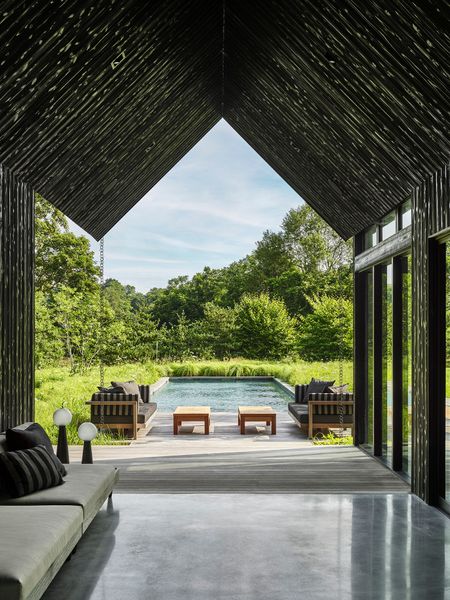
Upon entry, the view expands to highlight the pool, wildflower meadow, and surrounding vegetation.
Photo by Read McKendree/JBSA
The team quickly zeroed in on yakisugi to accomplish the desired rich exterior palette for the home, a material Ed had first encountered on a previous trip to Japan. “I was touring Kyoto with a local guide and saw it on a home,” Ed recalls. “I distinctly remember commenting that the wood looked burned, and the guide told me a bit about the process.” Known as shou sugi ban in the West, the term refers to Japanese cedar, or sugi, that is intensely burned as a preservative heat treatment. In addition to aesthetic appeal, yakisugi is durable, sustainable, and requires minimal upkeep—it can last as long as 80 to 150 years without maintenance.
When it came to building his own home stateside, careful research led Ed to Nakamoto Forestry. As the preeminent manufacturer of authentic yakisugi, Nakamoto Forestry is a family-owned and -operated company with control over the entire manufacturing process—from their sugi (Japanese cedar) forests in Hiroshima, which they’ve sustainably managed since the 1920s, to four family-owned mills that produce siding and flooring. Nakamoto Forestry honors Japanese tradition in their production of authentic yakisugi—while introducing new technologies and coatings which enhance the natural beauty and durability of the wood.
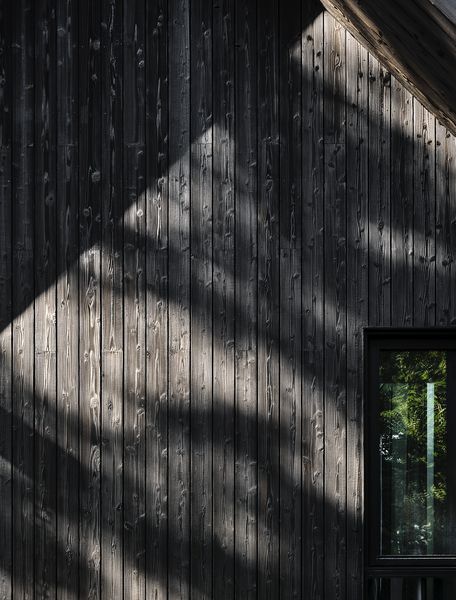
Yakisugi from Nakamoto Forestry was selected for the home’s exterior. Each of the Pika-Pika® boards used was graded by hand 11 times to ensure the highest quality.
Photo by Read McKendree/JBSA
See the full story on Dwell.com: An Angular Black Home Finds Harmony With Its Surrounding Meadow
Related stories:
